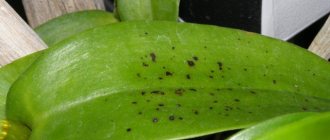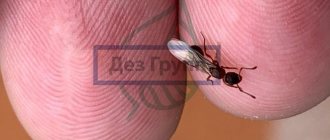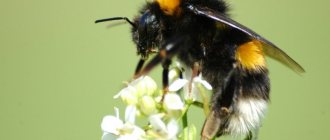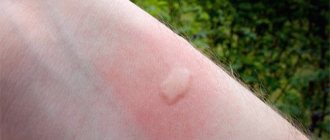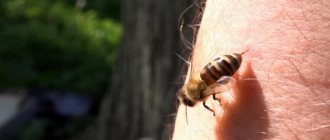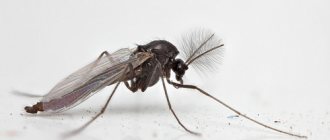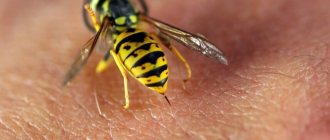Various pests strive to live next to humans: these are cockroaches, bedbugs, moths, and ants. This list can also include midges - small insects of the Diptera family. Science knows more than 1000 varieties of midges. There are black and green midges, whiteflies, and thrips. The flower midge is a pest of indoor plants; there is also a species that annoys animals; house flies living in apartments bite, spreading dangerous infections, especially when biting in the eye. And given the fact that, unlike mosquitoes, they swarm in a whole cloud, an insect attack can have very negative consequences.
Reasons for the appearance of midges in the house
Until you find out why these small insects appeared in your home, you will not be able to completely remove them.
The appearance of midges is associated with the following factors:
With irregular cleaning of the trash can, delay in taking it out. The temperature and especially humidity in a garbage heap with organic waste is slightly higher than in the environment. The remains of vegetables rot, midges begin to multiply. They notice insects when they are already flying everywhere. Often, midge eggs are laid on the walls and bottom of the bucket, and if it is not washed periodically, the insects will also begin to actively reproduce.
In most cases, insects breed in rotting environments.
With unwashed fruits and vegetables from the garden or store. Many people believe (and not without reason) that the harvest from their own garden is the best, without nitrates, etc. They don’t wash the fruits right away, they begin to spoil. As a result, midges appear. The same thing happens due to lack of time or simply laziness with vegetables and fruits purchased at the nearest market or store.
Dirty or spoiled fruit.
With rotting of the roots of indoor plants. This happens when the latter are watered abundantly. Any soil that is not sterilized contains midge eggs. As soon as a nutrient medium appears, small parasites immediately begin to multiply.
Flower plants. Midges appear in pots due to excess moisture.
With improper fertilization of house plants. Tea is often used for the latter. The midges love him very much.
They parasitize house plants, inhibiting their growth.
With placing indoor plants on the balcony. Insects can come from the street. Therefore, if you have already placed pots of flowers there, check them as often as possible.
The presence of unkempt indoor plants.
With irregular cleaning of the tray and the habitat of pets, especially rabbits, hamsters and guinea pigs.
There is always organic matter there; if you don’t clean it out regularly, it rots.
With improper care of the aquarium. Algae can also decompose. In addition, fish require moderately warm water.
These are ideal conditions for the appearance of rot, and therefore midges.
With clogged water supply and sewer systems. First of all, with siphons for sinks and toilets. Residues of food settle at the bottom, and if not cleaned in a timely manner, they rot. The result is not difficult to predict.
Malfunction of the sewer system or other communications, leaking pipes.
What products will help to get rid of midges in the kitchen?
If the role of “midge hunters” is not for you, then you can turn to various means to help get rid of annoying “neighbors”.
What helps against midges from folk remedies
Popular wisdom always tells you how best to act in a given situation. If you don’t know how to get rid of midges using folk remedies, then it’s time to write down our recommendations.
What a small fly - and how much trouble it causes
These simple tips will help get rid of annoying insects:
- Catnip is an excellent natural mosquito repeller. You can place it not only in places where midges collect, but also on windows and near doors.
- Aroma sessions with camphor oil also perfectly disperse these small insects. But if eggs have already been laid, there is a chance that this method will be ineffective.
- If you are overwhelmed by midges from the street, you can treat the windows and thresholds with carbolic acid.
- For owners of private houses, the best solution would be to plant elderberries, tomatoes, basil or bird cherry under the windows.
How else can you catch midges?
You can also make a spray at home that will drive away annoying midges. To do this, mix 20 drops of citronella oil, 5 drops of rosemary and 450 ml of water. This cocktail is poured into the container of a regular flower sprayer and used as needed. In addition, the aroma in the room will be pleasant.
How to poison midges using household chemicals
“Grandma’s recipes”, tested over the years, do not always help in the fight against fruit flies. If you don’t want to wait a long time for the effect, but want to put an end to this unpleasant invasion once and for all, then it is best to purchase chemicals. The most popular and effective are “Raptor” and “Aeroxon”.
Fly sprays are convenient, but not always applicable - you need to remember this
Effective remedies for flower pests are sold in special stores. There are many manufacturing companies, so a consultant in your store will help you decide on the choice of product.
Sticky, sweet and effective
If these options are not for you, and you still don’t know how to get rid of small midges in the kitchen, then you can also try using special sticky plates. They contain substances that attract insects, which remain there, sticking to the surface.
How to get rid of midges using mechanical methods
Have you tried everything, but still don’t know how to get rid of small flies in the kitchen? You can take “their fortress” by force. Namely, first remove the egg laying sites.
The main thing is not to miss anything
Usually these are secluded, damp places away from light. Did you find this? Then we remove the brush from the vacuum cleaner hose and take a good look at the “hiding place”. To be sure, thoroughly clean all rooms, especially in the most “suspicious places.” After such a total cleaning, you can poison the midges without fear of their appearance.
Why can midges appear in an apartment?
To get rid of small midges in your apartment once and for all, you need to find out why they appeared. After all, midges often appear in the apartments of very neat and clean owners who never expected such a neighborhood.
There are two types of midges in an apartment or house: some start in, others in. The reasons for the appearance of the former may be excessive watering of plants or the purchase of flowers in a pot with midge-infested soil.
In the kitchen, and sometimes in other places in the apartment, midges appear if there is food for them - rotting foods. For such midges, the smell of rot is like a magnet, attracting, and the rotting fruit or vegetable itself becomes a favorable place for life and reproduction.
Which midges can bite, and which are safe for people and animals?
This is a very common insect. It can be found in every corner of our planet, with the exception of Antarctica. On other parts of the land, these dipterans live everywhere, except for a number of remote islands and deserts devoid of natural bodies of water. You can become a victim of their attack anywhere: in taiga forests, on the sea coast, high in the mountains, in the country and even in a city apartment. Typically, midges attack on hot days near bodies of water.
Currently, 1500–2000 species of these insects are known. About 560 of them are found in our latitudes, some of which pose a serious danger to humans and animals. An allergy to a midge bite is not the most important harm that these insects can cause. They are also carriers of dangerous diseases that pose a potential threat to human health - plague, leprosy, anthrax, etc.
You shouldn't expect an attack from every midge. For example, Drosophila (fruit fly) is not dangerous to humans. Usually these insects appear in apartments, namely in the kitchen. They are attracted to rotten fruits and vegetables, sweets and fermented alcoholic drinks. They may also target wet rags, sinks and waste accumulations. Another species - ground flies - is dangerous only for plants.
Information about biting and, accordingly, posing a serious danger to warm-blooded varieties of midges is presented in the table:
| Types of blood-sucking midges | Dimensions, mm | Color | Habitat |
| Decorated (spotted) | 3–4,5 | Silver border on the back. The color of the antennae and body depends on the subspecies. | They live everywhere. |
| Horse | 2,5–4 | The back and abdomen of females have silvery-golden pubescence. In males, silvery spots are located on the upper part of the body. | They are found in heavily polluted natural bodies of water. |
| Redhead | Up to 3.5 | They have red compound eyes. Females have yellow limbs. | They live in Europe and the European part of Russia. They live in the channels of large muddy rivers. |
| Tundra | Until 3 | Males have a black-silver back with golden pubescence, females have a gray-black back and a rich yellow belly. | They live in the northern regions. |
| Short-palpid | Black body with silver spots. | The habitat extends from Karelia to the Arkhangelsk and Moscow regions. | |
| Silver | 3,5–3,8 | The back of males is decorated with silvery spots; in females they are of a more saturated shade. The paws are brown-black with a yellowish tone. | In addition to Russia, they are found in Western Europe and North America. |
| Light-browed | Up to 4 | Males have dark limbs, females are dark brown. | They are found in the northeast of Europe, in the European part of Russia and Transbaikalia. |
How to treat the consequences of bites
They react to a midge bite in different ways. The most annoying thing is itching, which leads to scratching and the appearance of microscopic lesions on the skin where the infection gets. After this, purulent inflammation has to be treated. Swelling in itself is not painful, but if it does not go away for a long time, occupies a large area or is located near the lips, eyes, or in the neck, then it interferes with normal life activities.
After a midge bite, it is necessary to begin treatment immediately to relieve the itching sensation and stop the spread of toxins.
How to proceed:
- rinse the skin with water, wipe dry;
- cool with ice, wrapping it in a bandage, towel, or some cold object;
- press the bite area with your palm and bandage;
- to treat a bite, you can use an alcohol-containing substance, chlorhexidine, Miramistin, hydrogen peroxide, furatsilin solution;
- relieve pain with paracetamol, Claritin, Diazolin;
- if rashes appear, then lubricate with Fenistil, Cynovit, Hyoxysone, Prednisolone;
- lotions with soda solution (1 tsp + 200 ml of warm water) relieve itching or reduce its manifestations.
Note! If a midge has bitten a child, you need to be especially careful, because they experience pain, swelling and itching are more pronounced, and even a single bite is dangerous. Hormonal drugs cannot be used; it is recommended to use Fenistil-gel, Zvezdochka balm, and Gvozdika cologne.
The skin itches for a long time, this interferes with sleep and work, and pain appears at the site of scratching. To prevent this, you can apply novocaine (0.5% solution), alcohol (1:2) dressings. Soothes with a light massage, stroking, patting with fingertips after lubrication with Menovazine or other products with menthol.
Bite infection
If the itching does not go away for a long time, purulent discharge may appear at the site of scratching - this means that dirt has been brought into the wound and putrefactive processes have begun to develop. At the first signs of discharge, it is necessary to begin therapeutic measures so that the process does not lead to deeper tissue damage:
- Wash the damaged skin well with soap and water;
- thoroughly treat with chlorhexidine, Decasan, hydrogen peroxide;
- apply an ointment that stops the development of a bacterial infection (Levomekol, Oflokain, Synthomycin Liniment, Levosin), bandage it;
- when the wound begins to heal, apply a bandage with Bepanten, Dexpanthenol, Panthenol, Actovegin, Methyluracil, Solcoseryl.
If the healing process is delayed, then medical assistance is necessary. Sometimes it is necessary to treat with antibiotics and clean the wound.
How to treat swelling
Swelling of soft tissues is one of the manifestations of the action of toxins. The swelling may occupy a small area, or it may begin to affect nearby areas.
Measures to relieve swelling after a midge bite:
- exposure to cold (ice, chilled metal);
- apply a bandage, squeeze the surface with your fingers;
- use alcohol (1:1 solution) and salt lotions (1 tsp + glass of water);
- rub with boric alcohol;
- apply ointments that relieve swelling (Hydrocortisone, Sinaflan, Trimistin, Triderm, Kremgen);
- for severe swelling, take Tavegil, Loratadine, Diazolin, Escinat, Furosemide, Manit.
Important! Particular attention should be paid to swelling in the respiratory area. If it grows quickly, then you need to provide access to fresh air to the victim and call a doctor. Such swelling should be treated by a specialist
Such swelling should be treated by a specialist.
Such swelling should be treated by a specialist.
Bite in the eye
Its small size allows the insect to crawl under clothing, into the ear, and sometimes it gets into the eye and causes a bite. The delicate skin around the eye instantly swells, begins to itch, and if prone to allergies, becomes inflamed. If the treatment is applied incorrectly, complications may arise, so consultation with a specialist is required.
First aid:
- Rinse the skin and mucous membranes with cold running water;
- take an antihistamine;
- lubricate the eyelids with Hydrocortisone, Dexamethasone;
- make a compress from cotton wool with parsley juice and green tea infusion;
- Apply a compress with a soda solution (1 tsp + glass of water) to the swelling;
- try not to scratch near the eye, so as not to provoke infection by scratching.
What are the dangers of skin lesions and how to treat them?
If the bite is treated incorrectly and untimely, the following complications arise:
- allergies (the appearance of a rash, nausea, weakness, fever - signs of such a reaction);
- inflammation of wounds (severe itching provokes scratching, and if infected, the damaged area festers);
- loss of vision (if bites in the eye area are treated incorrectly, there is a risk of vision loss).
To prevent complications, measures must be taken immediately. Immediately after discovering a bite you should:
- Wash the wound with water and laundry soap. You should not use other soapy products (gels, shampoos), as this may contribute to the development of allergies.
- Blot excess water with a napkin.
- Treat the wound with an antiseptic (Furacilin, Chlorhexidine).
- If the pain is intense, take a painkiller and an antihistamine (Paracetamol, Claritin, Suprastin, Tavegil).
- Cool the bite area with ice.
On a note. Netizens who have encountered a similar problem recommend applying Zvezdochka balm to the damaged area.
If the bite occurs in the eye area, you must:
- Rinse the damaged area with cold water.
- Relieve swelling with a special ointment, for example, Fenistil Gel.
- Cool it with a compress.
- You should consult a doctor as bites in the eye area are especially dangerous.
First aid for midge bites
If it so happens that you are bitten by a midge near your home, you can provide first aid to the bitten person, which will reduce the consequences:
First of all, it is recommended to find the site of the bite, identifying the location by the characteristic “hole”. Next, you need to squeeze it to remove any remaining poison from the wound. It is advisable to repeat this procedure several times. Next, you need to rinse the bite site with plenty of water to wash away any remaining toxic saliva. Blot the bite area with a napkin to remove excess water
At the same time, you should not rub this place, since you can aggravate the consequences of the bite; you need to carefully blot the wound. Next, the question arises of how to relieve swelling and prevent severe swelling. To relieve swelling, apply ice to the swollen area of the body.
Next, treat the bite site with an antiseptic, which is available in the house. You can take antihistamines and painkillers.
After providing first aid, be sure to monitor the well-being of the bitten person and the bite site itself. If you miss time and do not start treatment on time, if complications arise, you can end up in the hospital.
Also, if symptoms of a severe allergic reaction appear, you should consult a specialist.
Features of bites in children
Midge bites in children pose a high risk of complications. The main factor influencing minimal consequences and speedy healing is control of itching and swelling.
Since it is very difficult for young children to control themselves when itching, the main task is to relieve the itching and prevent the child from scratching the area.
Also, not all medications, for example, strong antihistamines, are suitable for children to relieve an allergic reaction. That is why, in case of severe swelling, a consultation with a general practitioner is necessary.
If you nevertheless choose drug treatment, make sure that these are products from the children's line. The question arises: how to relieve itching in a child?
- A very good way to distract a child from itching is to search for herbs together to apply a compress. You can go out into the yard with your child and look for plantains or dandelions.
- If you have a garden, you can go with your child to pick parsley and chop it up and apply it to the bite site.
- Cold is good for relieving swelling. Apply something cold to the bite area.
- You can also make a paste out of baking soda and apply it to the bite site, or simply grind it. But don't press too hard.
- If there are a lot of bites at once, you can give your child a bath with sea salt.
- There are a huge number of pencils, sprays and balms that relieve itching, burning and pain.
- You can also use clove and tea tree oils
If the bite occurs on the child’s eye, or in the eye area, after providing first aid at home, immediately show the child to a doctor.
What are the consequences of a bug bite
Like most bites, bug bites are simply reddish spots on the skin with a mark from the inserted proboscis. Most often, the bug leaves a peculiar series of such bites (3-7 pieces each). If you spot such a path on your body, you know that bedbugs are biting you!
If there is a large infection or a person is sensitive to its bites, an allergy may develop. This puts children at risk of developing anemia. The rashes from the bites are too profuse, and in some cases they can fester. This causes a lot of discomfort.
We invite you to familiarize yourself with: Photos of flea bites on a person - how and how to treat them
Bed bugs are clear carriers of many infectious diseases through their bites, but there are no recorded cases of transmission of hepatitis and HIV infection.
Photo and description of biting midges (midges)
The structure of these representatives of dipterans is practically no different from other insects. Their body consists of:
The insect may be black or brown. During flight, these representatives of dipterans produce a buzzing sound due to their halteres, which are modified wings rubbing against each other. The proboscis is shortened, so its owner, in order to get to the blood, gnaws a wide hole in the thickness of the skin. Female midges usually bite people and animals. You can see what this insect looks like in the photo.
How long a midge lives depends on gender. The average lifespan of males is several days, females - from 3 to 4 weeks. Sometimes females are able to survive for 2–3 months.
What to do
Most likely, specialized treatment will not be needed. However, if you experience unbearable pain and severe itching, you can try the following natural remedies to relieve swelling from a midge bite.
Rinse thoroughly
It is important to wash the area well with soap and water to avoid bacterial infection or, worse, Morgellons syndrome. Dry with blotting movements without rubbing.
Biting midges have four sharp blades in their mouths that tear the skin, leaving a small open wound susceptible to infection.
After thoroughly cleansing your skin, apply an antiseptic.
Apply apple cider vinegar
Vinegar is a popular natural home remedy that is used for a variety of purposes. It will help reduce swelling, pain, and redness. Soak a cotton swab in a little vinegar (1 part water to 1 part vinegar) and gently apply it to the area until it starts to feel better.
Apply a cold compress
If a midge bite causes swelling and unbearable itching, you may find some relief by applying a cold compress. Add some ice to a damp cloth and place it on the wound. Keep it on the affected area for at least 15 minutes.
The cooling sensation will reduce swelling, numbness of the skin, and relieve itching. Do not apply ice directly to the skin or leave the compress on for more than 20 minutes.
Use anti-itch cream
There are a huge number of pencils, sprays, balms that relieve itching, burning, and pain. Over-the-counter creams such as Cortizone-10 contain hydrocortisone.
Hydrocortisone is a chemical compound that temporarily relieves the itching associated with insect bites. Many creams contain aloe, which helps soothe and moisturize the skin.
Essential oils
Essential oils are an excellent treatment for insect bites. With a few drops you can quickly get rid of swelling and itching. Some will help prevent infection.
The best essential oils for midge bites:
- Lavender;
- Lemon balm;
- Tea tree;
- Chamomile;
- Thyme;
- Mint;
- Eucalyptus.
It is important to remember that oils are extremely effective and should never be applied directly to the skin. Before using, you need to make sure you dilute it with a quality carrier oil such as coconut, jojoba, almond
They are great for repelling midges, midges, and other annoying pests.
Take aspirin
Aspirin is a treatment that reduces inflammation associated with midge bites and also helps reduce swelling and itching. Use the back of a spoon to crush the aspirin and mix it with a little water to form a paste. Apply the paste to the injury site and leave for ten minutes.
Take a cold shower
If you're dealing with multiple bites, taking a cold shower for ten minutes will help you feel better. Cold water reduces swelling from midges and other insects.
Soda
Baking soda will help relieve pain after an insect attack. Its solution can reduce swelling of the eyes (1 tsp per glass of water).
Parsley
To prevent your eyelid from itching, you can use parsley juice. A piece of gauze soaked in it is applied to the eyes for several minutes. Such lotions relieve itching, swelling and swelling, and also improve vision due to the high content of vitamin A.
Plantain, mint, parsley and soda
Plantain and mint
Effectively relieves inflammation of the eye and relieves swelling. To do this, the leaves of the plant are washed with cool water, slightly crushed and applied to the affected area. Mint has similar properties. Thanks to its antibacterial effect, it removes swelling and protects the eyes from infection.
Cold
Treatment of edema often begins with the use of cold compresses. By applying ice wrapped in a cloth to your eye, you can quickly get rid of the discomfort.
Potato
The consequences of a bite can also be relieved with the help of raw potatoes. It is enough to cut it lengthwise and apply it to the bitten eyelid. After several such procedures, the swelling of the eye will decrease significantly.
Knowing how to relieve swelling of the eyelid when bitten by a midge, you can provide timely assistance to the victim
You should not postpone a visit to the doctor if your health has worsened. This is especially important for children, since their body’s immune defense is much weaker than that of adults. If a child gets a midge in his eye, he should consult a specialist as soon as possible.
What should you do if your leg or arm is swollen, painful and itchy after an insect bite?
Treatment of a victim of a midge bite should begin with first aid. This will prevent the occurrence of negative consequences and alleviate the condition of a bitten child or adult. Only after this can you begin symptomatic therapy aimed at getting rid of swelling, itching, burning, pain and redness.
First aid for victims - adults and children
If a child or adult has been bitten by these insects, the first thing to do is:
- Determine the location of the lesion and remove any remaining saliva from the wound. To do this, gently squeeze the skin several times.
- Wash the wound with plenty of running water and baby or laundry soap to wash away any remaining saliva.
- Dry the wound with a clean napkin using light blotting movements.
- Treat the affected area with an antiseptic (Furacilin, Chlorhexidine).
After providing emergency assistance, victims, especially children, should not be left unattended. If the bitten person’s health has worsened, and the affected area hurts unbearably, has become even more swollen and red, it is necessary to take him to the hospital.
Symptomatic therapy: how to relieve swelling, reduce pain and itching?
If a person has become a victim of a midge bite, after which the affected area is swollen, redness and severe itching appear, and this happens in most cases, measures must be taken to alleviate his condition. Symptomatic therapy can be based on the use of pharmaceutical preparations for external use (ointments, gels) or folk remedies. It all depends on the severity of the discomfort.
Pharmacy drugs
It is not enough to apply ointment or gel to itchy and swollen skin once. It is necessary to smear the affected area until itching and swelling are completely eliminated. Topical products should be used in strict accordance with the manufacturer's recommendations. This is the only way to quickly and without the risk of further aggravating the situation to eliminate the consequences of the bite of these insects. The table provides information about which ointments and gels can be used to do this:
| Type of body reaction to an insect bite | Drugs | |
| Itching | Local antiallergic drugs | gel Fenistil, Psilobalm |
| Edema | Hormonal decongestant ointments | Hydrocortisone, Sinaflan, Trimistin |
| Wound infection | Antiseptic ointments | Levomekol, Oflocain, Levosin |
| Violation of the integrity of the skin | Regenerating agents | Panthenol, Solcoseryl, Bepanten, Actovegin |
If there is extensive swelling that extends to skin areas distant from the site of the lesion, you may need to:
- injection administration of antihistamines (Tavegil, Suprastin, Diphenhydramine);
- use of glucocorticosteroids (Dexamethasone, Hydrocortisone, Methylprednisolone);
- treatment with decongestants (L-lysine escinate, Mannitol, Furosemide).
When using hormonal ointments, one nuance must be taken into account. If you apply them to open wounds, it will cause a strong burning sensation and slow down tissue regeneration. It is recommended to apply them along the edges of wounds.
Folk remedies
If an insect bites you on the leg or arm and a mild reaction is observed in the affected area, folk remedies will come to the rescue. When using them, you need to know for sure that the bitten person tolerates the components included in their composition well. The table provides information on what methods, based on the use of natural ingredients, can treat the consequences of bites from these representatives of dipterans:
| Types of body reaction to an insect bite | Components | Preparation | Application |
| Edema | Dandelion or plantain | Knead the thoroughly washed plant with your hands. | Apply the plant to the affected area, securing it with adhesive tape. |
| Onion | Grate the vegetable on a fine grater. | Apply onion or potato pulp to the swollen area. | |
| Potato | |||
| Itching | Peppermint paste or mouthwash | Not required | Apply paste to the itchy skin or wipe with a cotton pad soaked in mouthwash. |
| Boric alcohol or aqueous solution of boric acid | Treat the affected area with liquid. | ||
| 3% vinegar | Mix vinegar and water in equal proportions. | Make a compress by applying a piece of gauze soaked in the product to the itchy skin on your leg or arm and securing it with an adhesive plaster. | |
| Salt | Dilute 1 tsp. salt in 200 ml of water. |
Swelling of the eyes due to a midge bite
Midges are one of the smallest blood-sucking insects that are so common in our latitudes. In addition to the fact that they bite people on exposed parts of the body, they can also get under clothes, into the ears, nose and of course into the eye.
A midge bite to the eye can be especially dangerous. In addition to swelling, itching and an allergic reaction, excessive lacrimation may occur.
In addition to all the risks listed, there is an added risk of vision deterioration and even complete loss.
First aid for a bite to the eye, or eye area, is almost the same as for a regular bite.
- First of all, you need to rinse your eye with plenty of cold water.
- Take or smear the eyelid, if possible, with an antihistamine.
- Cold compresses (ice cubes or any other cool objects) help relieve swelling.
- You can use a compress of grated potatoes, or apply a potato slice directly.
- For further consultation, it is recommended to contact an ophthalmologist to prescribe special medications.
You should not use alcohol-containing substances, as well as hydrogen peroxide, as there is a possibility of damaging the mucous membrane of the eye.
What is different about the Drosophila fly?
This insect has a number of other names, such as vinegar fly or wine fly. Firstly, this insect is distinguished by its tiny size, with a body length of no more than 3 mm. Secondly, they move exclusively in large flocks, with enviable speed. Because of this, they bother people.
Drosophila prefer to feed on rotten fruits, berries and vegetables, as well as other food waste that is not fresh. They are especially attracted by the smell of wine, or rather by fermented products. Wine fly larvae also feed on tiny microorganisms.
These ubiquitous insects are quite difficult to confuse with other insects due to their characteristic movements and diet. If some very small insects swarm over rotten food, then these are most likely Drosophila flies. It is almost impossible to find solitary flying creatures. If a Drosophila fly was seen somewhere, then you can be sure that in a couple of minutes so many of them will appear here that it is impossible to count.
In what places in the house can they appear?
Popular places where midges can appear:
- pots with plants and flowers;
- flower bouquets in vases;
- fruits and vegetables, both raw and thermally processed;
- organic waste;
- open sewer pipes;
- basement;
- a neighbor's room, from where it will not be difficult for midges to move into your home.
Drosophila reproduce at lightning speed, and before you know it, they will take over the entire apartment space in a matter of days. All the plants in the house, the trash can, prepared meals on the table, and leftover food will attract small pests. And dealing with them will not be as easy as simply taking action and preventing their occurrence. In addition to food midges, you may encounter the following types of new residents in your apartment:
- Water midges. They often breed in places with high humidity (bathrooms - bathtubs, showers, near aquariums or in sink drains). Midges do not live long, but they successfully lay eggs.
- Clothes midges. They increase their number exponentially in damp, undried things. Especially in summer and in hot, humid climates.
- Sciriades. They multiply well and grow in the soil of flower pots when fertilized, especially with organic fertilizers. It is also not recommended to overfill the flowers with water, so that a stagnant swamp does not form there.
Prevention
Fruit flies are miniature insects with rapid reproduction. Midges are found in apartments from food sources, trash cans, house flowers, and furniture. Getting rid of hordes in your home is not easy. Prevention is the best control measure:
- keep the house, apartment clean, carry out general cleaning more often;
- do not store fruits on the table in vases for a long time, because midges can hover over them after just a few hours;
- treat kitchen sinks and drains with proven chemicals;
- regularly take out trash cans, cover them with lids, and wash them thoroughly with soapy water;
- discard spoiled fruits in a timely manner and prevent them from rotting;
- do not leave dirty dishes with food residues in the sink;
- reduce watering of indoor flowers and cover the top layer of soil with dry mulch if midges begin to fly out of the pots;
- regularly check containers with fruits and vegetables, throw away soggy potatoes and spoiled onions without pity.
Drosophila rapidly reproduce and increase in number. If the source of their spread near moldy putrefactive products and garbage cans is not eliminated in time, then whole hordes may appear within a day. The midges hide and scatter throughout the apartment. At the same time, they are very small, not always noticeable. It's difficult to fight them. The main thing is to prevent large-scale emergence of pests. This means that it is worth taking preventive measures more often, keeping the room clean, and not leaving food at room temperature for a long time.
Drosophila flies are quite annoying with their presence in people's homes, despite the fact that they do not bite, do not carry dangerous diseases and do not spoil furniture or food, like some pests. If you leave a half-eaten piece of pie or fruit on the table, a flock of tiny creatures scurrying around will immediately gather around them.
One gets the impression that they generally come out of nowhere, and not in single, but in numerous copies. The thought immediately arises of how to get rid of them, since they have no place in a person’s home.
Routes of penetration
Many housewives are puzzled by the question of where midges come from in their apartments. Insects enter the room in various ways:
- Fruit midges usually enter the house along with fruits and vegetables brought from the market or garden. In the heat, when the fruits begin to rot, pests grow and multiply, turning the life of the apartment inhabitants into a test. Onion midges are also brought into the house in a similar way.
- Sciarids may end up in the soil brought from the store or fly through the window, taking a liking to the green pet standing on the windowsill. A favorable environment for their habitat is excessively moist soil.
- Basement midges are attracted to unsanitary conditions: dirt, accumulation of garbage, dampness, unpleasant odors from polluted sewers, as well as a toilet that has not been cleaned for a long time. Ventilation holes are another option where such pests come from. In addition, the occurrence of midges is inevitable if there are garbage bins or flowering trees near the window.
- A single midge entering an apartment through a window can also settle in a pet’s cage, using food debris stuck in the sawdust.
From the above, we can conclude that the main reasons for the appearance of midges in an apartment are unsanitary conditions. Missing food, dirt, litter and moisture are what cause annoying insects. And if no measures are taken, then very soon entire “hordes” of black flies will be flying around the apartment.
Life cycle and reproduction
Diptera female Drosophila reproduce by laying up to 55-75 eggs at a time. The life cycle consists of 4 stages of development: egg - larva - pupa - adult. Features and characteristics of each stage:
- Egg : the first phase of insect development. After the penetration of sperm, females immediately begin to lay eggs, selecting optimal places (rotten vegetables, fruits, meat products, manure, garbage pits) with care for the offspring. On the first day of life, an egg 0.5 mm long is at the metaphase stage, equipped with 2 processes for holding on the surface of the culture medium. Inside the eggs are embryos that feed on the yolk. The stage of transformation into a tiny larva does not exceed 24 hours.
- Larva : after a day, a larva emerges from each egg in the form of thin white threads, invisible to the naked eye. Life expectancy at this stage is 5-7 days. The larvae burrow into the nutrient medium from which they were born, avoiding exposure to ultraviolet radiation and direct sunlight. In the thickness of the nutritional substance, they quickly gain weight and calories, and change color to brownish. Next, they pupate, which is where a new stage of fruit fly development begins.
- Pupa : stage of the life of an insect in which the skin of the larva hardens, becoming a kind of puparium, a cover for a mature individual. Inside, a final metamorphosis occurs, during which the larval tissues disintegrate and all systems are restructured. This is how new organs and imaginal discs (special areas of embryonic tissue) are formed.
- Imago : stage of formation of young pupated individuals. They differ from adult flies in their elongated body and not outstretched wings. The duration of the stage in laboratory conditions is 3-4 weeks, in the natural environment - 8 hours. Afterwards, the individuals become sexually mature, and the females become ready for fertilization. Already on the second day, the laying of up to 70 eggs begins, so in females - until the end of their lives.
In general, vinegar or fruit flies live 10 - 30 days, during which they go through all 4 stages of the life cycle. Although life expectancy greatly depends on the ambient temperature. Ideally - 18-20 degrees. At t +10+12 degrees, buzzing insects survive up to several weeks, up to 2-3 months in winter.
Females and males
Females differ from males in morphological characters:
- Females are larger, although their size may be influenced by nutrition and the period of larval development.
- The shape of the abdomen in females is round with a sharp tip, in males it is cylindrical with a rounded end.
- The number of sternites (surface chitinous scutes) in females is 8, in males for involvement in the process of wing movement - 7.
Read also: Cod aspic with gelatin step by step
On the left is a female, on the right is a male.
Help: you can understand whether it is a male or a female by examining their abdomen under a microscope. Males have black lines and thin setae near the tarsus, which are necessary to hold the female during the mating process. Females have 5 stripes on their abdomen, males have 3. At the end of the abdomen, males have a dark spot, while females have thick black stripes.
Treatment of bites
First of all, before going for a walk in nature, you should always have rubbing alcohol on hand. The bitten area must be wiped with a cotton swab soaked in the preparation. Painful sensations will become much less, and unpleasant consequences appear extremely rarely.
If an incident involving an insect attack occurs close to home, regular ice will help reduce pain and burning. Place it in a clean cloth and press it onto the affected area of the body. You can simply wipe the reddened area with an ice cube.
The following folk remedies cope well with redness and burning after a bite:
- cologne;
- fresh lemon juice;
- paste of parsley leaves;
- table vinegar;
- concentrated solution of soda in water.
If you don’t have any remedies suitable for relieving painful sensations on hand, you can grate new potatoes and apply a compress to the affected area. Traditional medicine also advises applying chopped onions; it will do an excellent job of itching and burning.
If none of the methods help, there is no other option than to seek medical help. You especially shouldn’t delay it if alarming symptoms appear:
- dizziness;
- fainting;
- severe swelling;
- discharge of cloudy fluid from wounds.
How to deal with fruit flies?
Flies flock to sweet aromas and rotten pieces of vegetables and fruits. All folk remedies for fighting and catching are associated specifically with sweet food. Effective methods for home traps:
- Pour fruit juice, a few drops of water, vinegar, and detergent into the bowl. Place in a place where insects gather. Soon they will begin to flock to the attractive aromas, hitting and rising to the surface of the liquid in the bowl.
- Place a piece of fruit in a glass jar, pour in a little compote or sweet juice. Insert a paper funnel with a wide neck but a narrow bottom so that the flies cannot crawl back out. Cover the neck of the jar with tape for security. This way, fruit flies will begin to flock to the aromas and end up in the container without the ability to get out.
- Pour fruit (wood) juice and soap solution into a bottle with a narrow neck. Place in a place where insects gather. The soapy film on the surface of the juice will not allow them to get back out. Add solution as it dries.
- Take a glass of yogurt, put bait (compote, juice, fruit) on the bottom. Cover the top with cling film and make several holes in it. The midges will begin to fly in and get inside without the ability to get out and fly away.
You can use slices of melon and watermelon as bait. You can put the fruit in a bag by making several holes in it. When the midges gather, close the bag with a sharp movement and take it to the trash.
Help remove insects:
- fumigators;
- sticky tape with fruit juice spread on it;
- store-bought traps for catching (Aeroxon, Raptor);
- chemical aerosols, insecticides (Dichlorvos, Combat, Hexachloran), if necessary, treat sewer drains and drains;
- flowers that will close and open while capturing prey;
- kerosene and turpentine, add a few drops to clean water, wash the windows and walls with the resulting solution.
Flies are afraid of fresh air and low temperatures. There will probably be fewer of them in the room if you leave the window open at night. Elderberry with a specific smell repels well, for which it is enough to spread the leaves around the apartment. Tomato seedlings and predator plants (tansy, fern, geranium), which can serve as bait, repel midges.
general description
Midges are small winged insects that resemble small flies. Their bites are very painful and unpleasant. In search of food, midges do not disdain either human or animal blood. They do not bite immediately; they can crawl around the body for a long time in search of a more convenient place.
Neither thick clothing nor thick wool can save you from annoying insects. In the south, midges can cause a serious disease - onchocerciasis, since they sometimes carry small worm larvae and infect humans through bites.
Animals can also suffer from bites - numerous wounds cause severe pain. Sometimes livestock diseases with simulidotoxicosis occur, and midges are most often the cause of the epidemic.
Most often, in order to avoid insect attacks, protective equipment is used. You can buy special medications in pharmacies, but traditional medicine also recommends effective recipes and advice.
Insect bites
Similarities with people
A March 2000 study by the National Human Genome Research Institute comparing the fruit fly and the human genome found that about 60% of the genes were the same.
About 75% of known human disease genes have a recognizable match in the fruit midge genome. Drosophila is used as a genetic model for a number of human diseases:
- neurodegenerative disorders;
- Parkinson's, Huntington's disease;
- spinocerebellar ataxia;
- Alzheimer's disease.
The fly is used to study the mechanisms underlying aging, oxidative stress, immunity, diabetes, cancer, drug abuse.
There are insects biting in the bed, do you want to know which ones?
Mosquitoes and midges can be detected with the naked eye. And they don’t sleep in bed with us either. Having made sure that these two types of “vampires” are not involved in the bitten skin, one should sin on other creatures. Below is a complete list of which arthropods bite you in bed. There aren't many of them. Look.
Bloodsucking
Fleas: It is a mistake to believe that the gastronomic preferences of this type of blood-sucking living creature are limited to cats and dogs. They enjoy feasting on people, especially preferring small children. Look at the distinctive features of bites:
- The attack site is mainly the legs. If you press down on a flea with your hand or stomach, it will happily bite you;
- Activity - attack at any time, including at night;
- Appearance - they come to the apartment with their pets. They can live in mattresses and sofas, because by nature they love warmth. They are able to live in rags, behind wallpaper, under floors.
The bites are characterized by an irregular shape and severe itching, much more powerful than that caused by mosquitoes. Small jumpers have a fairly strong shell, so they can only be crushed by squeezing them between the nails. They live from 1 to 18 months, due to which the population can increase significantly if extermination is not carried out in time.
Bedbugs: small (3-8 mm), and therefore not subject to mechanical stress. They drink blood using their trunk, making the tracks indistinguishable from mosquito marks. It is almost impossible to get rid of them using improvised means. “Vampires” operate exclusively at night, crawling out of furniture and even flower pots. One individual bites several times a night, and people’s faces also suffer.
Lice: we are talking about a type of linen that, for unknown reasons, has become increasingly common among us. Previously it was believed that the creature appears due to unsanitary conditions, but this theory has not been confirmed. Animals move on things - you could spend the night in a hotel and bring it home, or a friend brought “guests” with him. Unlike regular lice, these do not live on humans.
Other
In bed, insects bite us not only because they want to eat. Some species are simply defending themselves. We are often asked to exterminate ants in the house. In addition to ruining food, they also run on your face. In fact, the problem lies in the availability of food near the sleeping area. Some people put sweet tea on their nightstand, others crunch treats on their favorite pillow, leaving crumbs behind. In this case, there is no need to be afraid of cockroaches, because they are quite cautious and prefer not to approach a person. Although, in the company’s practice, there were neglected cases when mustachioed animals fell on people from the ceiling, albeit without biting.
Getting to know the insect
Midges are small insects whose size barely reaches 5 mm. Most species have completely miniature sizes - 2 mm. They live everywhere, with the exception of Antarctica. All phases of development, until the insect reaches the imago stage, midges spend in an introductory environment. The family has about 1,800 species; the European temperate climate is inhabited mainly by fruit flies, whiteflies, and sciarids. Only a knowledgeable entomologist can determine the differences between them. The poor fellow, bitten by a midge, has no time to determine the species, and all the vileness looks the same to him.
In most species, only females feed on the blood of warm-blooded animals. Males eat exclusively fruit or flower nectar.
People who live near bodies of water or travelers in the taiga and tundra are most aware of how midges bite. As experienced people say, a midge in the taiga will be worse than a mosquito. Hordes of insects are called nothing more than midges. Rivers and lakes with running water are mandatory conditions for the reproduction of insects. Females lay their eggs on plant stems and stones in ponds. Some individuals specifically go underwater to lay offspring. Other females do not bother themselves with diving skills and drop their eggs on the fly. If you take a portion of water from the bottom of a river or any other body of water, using a magnifying glass you can see tiny worm-like white larvae.
The peak of activity begins in mid-April, early May and ends only by the end of June. In the northern regions, midge activity decreases after snowfall. Insects feed only during the daytime in sunny weather. On a rainy, cloudy day, no midge activity was recorded at night. Insects live in flocks containing myriads of individuals. People and animals suffer from midge bites. There are known cases where tens of thousands of cattle died from attacks by the Colombian midge in the Danube countries.
“One day in late spring, my family and I came to visit relatives living on the banks of the small river Khoper. Suspecting nothing, we decided to get out into nature and relax on the river bank. We drove up to the shore and, inspired by the view of the spring landscape, quickly got out of the car. And then it started! Swarms of small midges swarmed around us and began to bite us furiously, tiny insects getting into our mouths and noses. The child immediately ran into the car, and we adults still tried to resist. But neither running fast nor waving branches helped. I had to leave the inhospitable shore; it’s good that at least no one was allergic to the midge bite. Local residents then laughed at us and said that the midge would disappear only after the flood and the June haymaking.”
Valentina Vladimirovna, Balashov
How to get rid of sewer flies: a review of the best traps and chemicals
So, what to do with midges in an apartment, and where is the best place to install fly traps?
Most often they need to be placed at the site of infection. Near a garbage dump, a low drain, somewhere near the sink. It is clear that there is no need to place it in the sink itself - the flies will fly into the trap for food anyway.
Adhesive tape Raptor against flies and flower gnats
This trap is designed for fruit flies, but, judging by user reviews, it is also perfect for their sewer “sisters”. Manufacturers claim that one such set will protect your home for 180 days - that is, one trap should be enough for exactly a month.
Inside the small plastic containers is a mixture that is non-toxic to humans - something like apple cider vinegar. The device is designed in such a way that the bait will not leak out of it even if it falls or breaks. The description says that BEAPCO catches 2 times more flies than competitors.
Users note the ease of installation, the high efficiency of the trap and the fact that it even catches beetles and mosquitoes. One man even swore in the comments that his BEAPCO caught a couple hundred midges overnight! True, some buyers complain about the quality of the plastic: they say it breaks if you step on it or drop it on the floor, which, however, is logical: it’s not a mixture of titanium and platinum...
Price: 185 rub.
What they look like
It is important to make sure that the insect you see is actually a fruit fly.
Fruit midges belong to the family Drosophilidae . Common species include Drosophila melanogaster (common fruit fly) and Drosophila suzukii (Asian fruit fly). These insects are very small (about two to four millimeters long) and vary in color from yellow to brown to black.
The belly may be dark, even black with transverse rings. The main distinguishing feature is red eyes. They are found throughout the world, but are more common in tropical areas with humid climates.
There are several pests that are constantly mistaken for fruit gnats (but more on that later).

